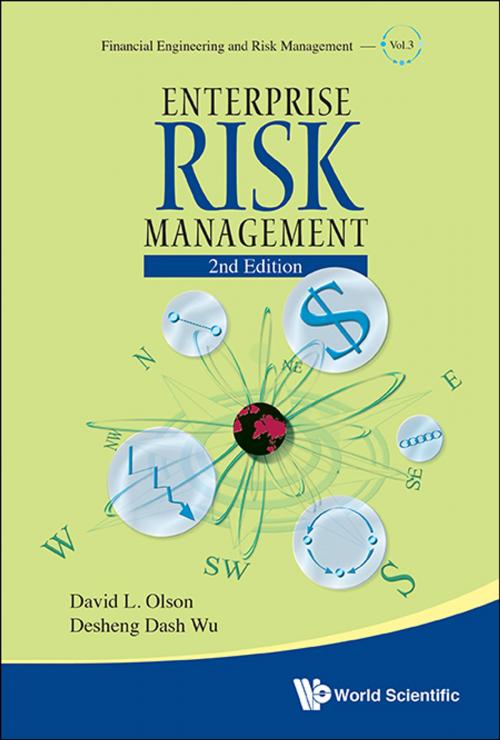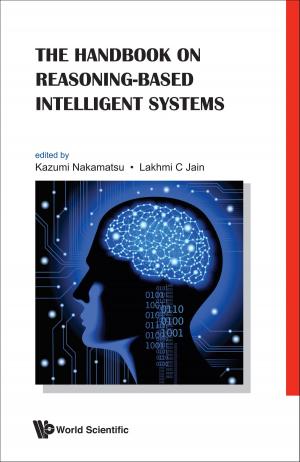Enterprise Risk Management
Business & Finance, Finance & Investing, Finance, Nonfiction, Reference & Language, Reference, Social & Cultural Studies, Social Science| Author: | David L Olson, Desheng Dash Wu | ISBN: | 9789814632782 |
| Publisher: | World Scientific Publishing Company | Publication: | January 21, 2015 |
| Imprint: | WSPC | Language: | English |
| Author: | David L Olson, Desheng Dash Wu |
| ISBN: | 9789814632782 |
| Publisher: | World Scientific Publishing Company |
| Publication: | January 21, 2015 |
| Imprint: | WSPC |
| Language: | English |
Risk is inherent in business. Without risk, there would be no motivation to conduct business. But a key principle is that organizations should accept risks that they are competent enough to deal with, and “outsource” other risks to those who are more competent to deal with them (such as insurance companies). Enterprise Risk Management (2nd Edition) approaches enterprise risk management from the perspectives of accounting, supply chains, and disaster management, in addition to the core perspective of finance. While the first edition included the perspective of information systems, the second edition views this as part of supply chain management or else focused on technological specifics. It discusses analytical tools available to assess risk, such as balanced scorecards, risk matrices, multiple criteria analysis, simulation, data envelopment analysis, and financial risk measures.
Contents:
-
Perspectives:
- Enterprise Risk Management
- The Financial Perspective
- The Accounting Perspective
- Supply Chain Risk Management
- Disaster Planning
-
Tools:
- Risk Matrices in Risk Management
- Balanced Scorecards
- Multiple Criteria Analysis
- Simulation Risk Modeling
- Credit Risk Analysis
- DEA and Chance Constrained Models of Risk
-
Application:
- Finance Risk Concepts
- Accounting Risk Case in Ireland
- Supply Chain Technology Risk Cases
- Earthquake Disaster Response in China
Readership: Researchers interested in enterprise risk management; advanced undergraduates and graduates in business.
Key Features:
- Addresses the perspectives of accounting, supply chains, and disaster management
- Discusses analytical tools available to assess risk, allowing better informed managerial decision making
- Contains cases on Irish banking, various supply chain risk management events, and earthquake disaster response in China
Risk is inherent in business. Without risk, there would be no motivation to conduct business. But a key principle is that organizations should accept risks that they are competent enough to deal with, and “outsource” other risks to those who are more competent to deal with them (such as insurance companies). Enterprise Risk Management (2nd Edition) approaches enterprise risk management from the perspectives of accounting, supply chains, and disaster management, in addition to the core perspective of finance. While the first edition included the perspective of information systems, the second edition views this as part of supply chain management or else focused on technological specifics. It discusses analytical tools available to assess risk, such as balanced scorecards, risk matrices, multiple criteria analysis, simulation, data envelopment analysis, and financial risk measures.
Contents:
-
Perspectives:
- Enterprise Risk Management
- The Financial Perspective
- The Accounting Perspective
- Supply Chain Risk Management
- Disaster Planning
-
Tools:
- Risk Matrices in Risk Management
- Balanced Scorecards
- Multiple Criteria Analysis
- Simulation Risk Modeling
- Credit Risk Analysis
- DEA and Chance Constrained Models of Risk
-
Application:
- Finance Risk Concepts
- Accounting Risk Case in Ireland
- Supply Chain Technology Risk Cases
- Earthquake Disaster Response in China
Readership: Researchers interested in enterprise risk management; advanced undergraduates and graduates in business.
Key Features:
- Addresses the perspectives of accounting, supply chains, and disaster management
- Discusses analytical tools available to assess risk, allowing better informed managerial decision making
- Contains cases on Irish banking, various supply chain risk management events, and earthquake disaster response in China















